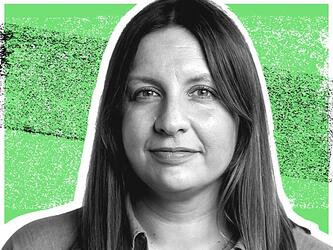Definition of research is changing as brands look to remain culturally relevant
Speaking during a session on immersive research at Impact 2019, Matilda Andersson, managing director, London at CrowdDNA, said: “When it comes to empathising with people, first-hand experience always works.”
The agency conducted research for Unilever on its Axe brand, known as Lynx in the UK, to help the brand understand young men’s experience of dating.
As part of the process, CrowdDNA asked the client team and its creative agency, 72andSunny, to send in photographs of themselves as teenagers.
They did client immersion in six of the eight markets where they did research, with around 10 to 35 client stakeholders present at each session. The agency met them, briefed them, divided them into smaller teams, and the client teams conducted the sessions themselves.
The agency didn’t accompany the client on the immersion sessions. “As a researcher, to be able to just hand someone a map and send them out to meet participants, was definitely outside of my comfort zone,” said Andersson.
"Research is changing towards deeper immersion, and it’s really because the world is changing. Being culturally relevant is really the only way big brands can future-proof," said Andersson, but added:"Research was still really important for this project. We didn't just replace the robustness of ethnography on and offline for client immersions. We were able to explore the dating journey in detail."
The session also included a case study from Bamm, who developed a physical retail space for Coca-Cola to test new product concepts in Boxpark in Croydon. The pop-up space, called Pop Shop, crossed the boundaries between retail and insight, allowing researchers to test consumer reactions and client stakeholders to understand more about young consumers’ food and drink preferences.
Payam Ghamsari, new beverages CMI at The Coca-Cola Company, said: “We spent a lot of time building everything – we had to get some money for it but apart from that we didn’t tell anyone about it. Once we did that, once we got it up and running, we started going around the business, going to local markets. Now it’s got its own momentum, because the business is behind it and they like it, but if we told them about it beforehand, the chances are it would have been killed before it was started.”
Ghamsari added: “We probably blurred the lines between research, marketing and other things. When we were having a challenge convincing supermarkets to stock this drink, we invited them down to spend the afternoon with us watching consumers drink it. We did that as well as doing all the research. It’s about making it as immersive as possible; whether that be qualitative, quantitative or video, it doesn’t matter as long as it’s answering the question and getting consumer feedback.”
The company has launched five new products across the majority of Western Europe in the last year, all of which have gone through the Pop Shop process. The company now has a shop in Madrid and has plans to open more in Brussels, Paris and Berlin in the next year.
It also plans to develop the London shop with the hope of eventually selling directly to the consumer. Ghamsari said: "That was always the original idea – let’s just see what sells and we’ll see what people buy and if they don’t buy it, we’ll change it.”
Matt Baker, founder and creative director at Bamm, said: “From our perspective as an agency we’ve had to rethink about how we approach research – we’ve had to speak to set designers and really think about staffing, how we man the space as a retail operation.”
The session also heard from Sarah Grant, research manager at Insites Consulting, and Kelly Laher, consumer insights manager – innovation at Nestle Cereals, on how they developed an online community, Future Cereal Club, to make research more approachable for participants and more ad hoc and less resource-intensive for the brand.

We hope you enjoyed this article.
Research Live is published by MRS.
The Market Research Society (MRS) exists to promote and protect the research sector, showcasing how research delivers impact for businesses and government.
Members of MRS enjoy many benefits including tailoured policy guidance, discounts on training and conferences, and access to member-only content.
For example, there's an archive of winning case studies from over a decade of MRS Awards.
Find out more about the benefits of joining MRS here.












0 Comments